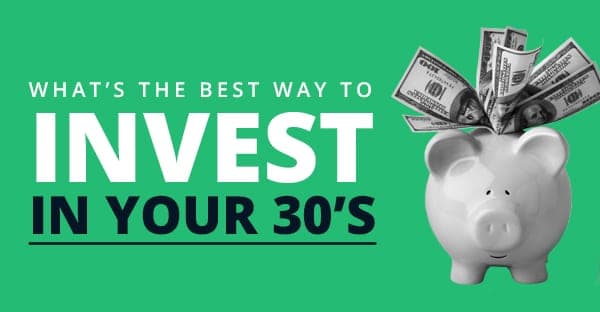The time value of compound interest simply can't be overstated. If you begin investing in your 30s by putting aside $5,000 per year, you can expect to have around $1 million by the time you retire at age 65.
Meanwhile, someone who doesn't start saving until their 40s will need to set aside three times this annual amount to achieve the same total return.
But the competing demands on your time and money in your 30s can make it tough to save as much as you should.
When choosing between saving for retirement—ideally, several decades down the road—and getting a new house, adding to your family, or going back to school, you may feel that current expenses should always take priority.
Fortunately, there are some things you can do to ensure that your money continues to work for you.
Let’s talk about how to best to achieve the delicate balance between living for today and investing for tomorrow...
What's your Investing IQ?
See how you stack up against other investors.1. Turn Your Raises into Savings
For many 30 somethings, this decade marks the first time you break out of a certain income bracket or achieve that coveted career position.
While it's natural to want to celebrate these advances in your career, one of the best things you can do with a raise is to, after a celebratory dinner, increase your 401(k) withholding (only if your company matches it) or start an IRA and get investing. Remember, there is a key difference between investing vs saving.
By minimizing the amount your take-home pay increases after each raise, you can avoid "lifestyle creep" while also increasing your savings rate.
Your 30s is also when many college and grad school graduates finally pay off their student loans.
Reroute your former student loan payment to other debt (or, better yet, invest it in an IRA or taxable account) for another pain-free method of saving.
2. (Finally) Roll Over Your Old 401(k)
If you're still carrying around one or more 401(k) accounts from a prior employer, it's usually a good idea to roll these over into an IRA.
Many company 401(k) plans have fewer offerings and higher fees than those available at larger brokerage firms, so getting this money into one account can give you access to a wide range of investments at a lower cost.
3. Keep an Eye on Your Credit
Your credit score doesn't just affect your ability to access credit—it impacts the interest rates you're offered.
If your credit score is low, you may pay double or more the interest rate offered to consumers with high credit scores, even if you have the same ability to repay.
There are many free sites that allow you to monitor your credit score on a daily or weekly basis.
Some credit cards will also offer you a "score snapshot" as a perk associated with your account.
4. Set Short-Term and Long-Term Financial Goals (Promises)
It can be tempting to live in the moment, especially when you're feeling financially squeezed.
But keeping your eye on both short and long-term financial goals is the best way to make sure that the actions you take now don't have a disproportionate impact on your future.
For example, you may want to refinance your mortgage to pay for some home repairs while taking advantage of current low-interest rates.
But stretching out your mortgage payment for another 30 years may make it tough to sell and downsize if you're hoping to retire in your fifties.
Instead, you might consider making accelerated payments or refinancing for a shorter term so you'll have more flexibility down the road.
5. Rethink Your Budget
When you become more comfortable in your career and personal life, it can be easy to relax a formerly-iron grip on your household budget.
But falling prey to lifestyle creep can sometimes mean paying hundreds of dollars per month on things that don't improve your life, from extended warranties to seldom-used box store membership fees.
Take stock of your subscriptions (like magazines, audiobook sites, and streaming services), annual credit card fees, and other small but recurring costs, to cut out the "fluff" from your budget without much of an impact on your day-to-day life.
When did you start investing for retirement? How close are you now? Not sure how much you'll need to retire? Check out my retirement calculator.
How to Pick Rule #1 Stocks
5 simple steps to find, evaluate, and invest in wonderful companies.

